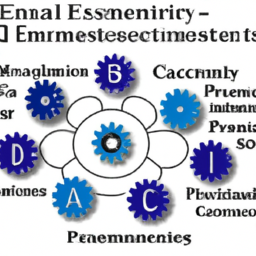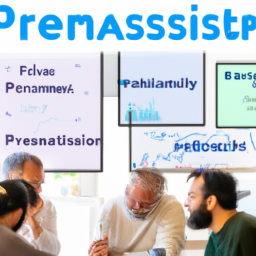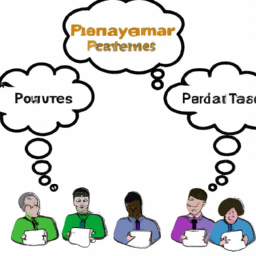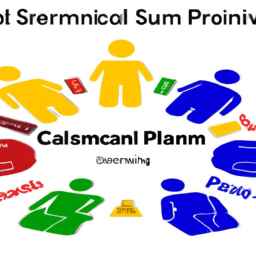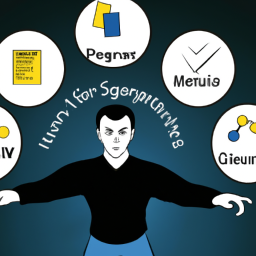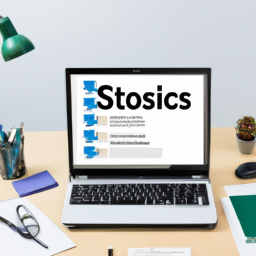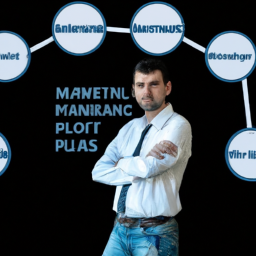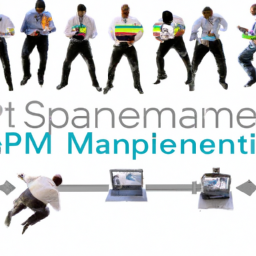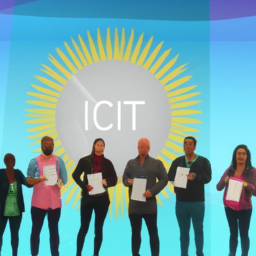Are you ready to take your PSM II exam to the next level?
In this article, we will delve beyond the basics and explore advanced concepts that will enhance your understanding of Agile principles and practices.
You’ll gain a deeper insight into the Scrum framework, discover the intricacies of advanced Scrum roles and responsibilities, and learn how to scale Scrum for large projects.
Additionally, we’ll uncover advanced techniques for agile planning and estimation.
Get ready to elevate your knowledge and ace your PSM II exam.
Key Takeaways
- Agile principles and practices are crucial for success in the PSM II exam and for leading agile transformations.
- Understanding the Scrum Framework in depth, including its artifacts and events, is essential for progressing in the agile journey.
- Advanced Scrum team members have responsibilities such as facilitating effective communication, coaching and mentoring, ensuring adherence to Scrum principles, and removing obstacles.
- Scaling Scrum for large projects requires adapting the framework, implementing the ‘Scrum of Scrums’ technique, and conducting regular meetings for coordination and collaboration.
Agile Principles and Practices
You should know that Agile Principles and Practices are crucial for success in the PSM II exam.
As an experienced and knowledgeable professional, you understand the significance of these concepts in the agile transformation journey. Agile principles guide teams in their pursuit of delivering customer value while embracing change. They promote collaboration, transparency, and adaptability, fostering an environment of continuous improvement.
Agile practices, on the other hand, provide the framework for implementing these principles effectively. They include techniques such as Scrum, Kanban, and Lean, which enable teams to deliver high-quality products in a timely manner.
Understanding and applying these principles and practices will not only help you excel in the PSM II exam but also equip you with the skills to lead successful agile transformations in real-world scenarios.
Scrum Framework in Depth
Delve deeper into the Scrum Framework and gain a comprehensive understanding of its intricacies. As you progress in your agile journey, it is crucial to explore the various scrum artifacts and events that form the foundation of this framework.
Scrum artifacts are the tangible outputs that help in aligning the team towards a common goal. These include the product backlog, sprint backlog, and increment. Each artifact serves a specific purpose and provides transparency and visibility to the project.
On the other hand, scrum events are the time-boxed activities that enable collaboration, inspection, and adaptation. These events, such as sprint planning, daily scrum, sprint review, and sprint retrospective, provide opportunities to synchronize and engage the team.
Advanced Scrum Roles and Responsibilities
To fully grasp the intricacies of the Scrum Framework, it’s important to understand the roles and responsibilities of advanced Scrum team members. These individuals play a vital role in ensuring the success of the Scrum team and driving advanced team dynamics.
As an advanced Scrum team member, you will have the opportunity to showcase your expertise and contribute to the project’s overall success through servant leadership. Here are five key responsibilities that advanced Scrum team members take on:
- Facilitating effective communication and collaboration within the Scrum team.
- Coaching and mentoring other team members to enhance their skills and capabilities.
- Ensuring that the Scrum team follows the Scrum principles and practices.
- Removing any obstacles that hinder the team’s progress.
- Continuously improving and adapting the Scrum processes to optimize team performance.
Scaling Scrum for Large Projects
Scaling Scrum for large projects requires adapting the Scrum framework to accommodate the complexities and unique challenges that arise in such environments. When implementing Scrum on a larger scale, you may encounter agile scaling challenges that need to be addressed.
One approach to tackle these challenges is by implementing the ‘Scrum of Scrums’ technique. This technique involves creating a network of multiple Scrum teams, each working on their own portion of the project, and then coordinating their efforts through regular Scrum of Scrums meetings.
These meetings provide an opportunity for team representatives to discuss dependencies, align priorities, and share progress updates. By implementing the Scrum of Scrums, you enable effective communication and collaboration between teams, ensuring that the project stays on track and delivers value in a timely manner.
Advanced Techniques for Agile Planning and Estimation
When implementing agile planning and estimation techniques, it’s important to consider factors such as team capacity, historical data, and stakeholder input. By utilizing advanced techniques, you can take your planning and estimation to the next level and achieve better results.
Here are five key concepts to consider:
-
Story Point Estimation: Use a relative sizing approach to estimate the effort required for each user story, allowing for more accurate planning.
-
Planning Poker: Involve the entire team in estimating the complexity of user stories, promoting collaboration and shared understanding.
-
Monte Carlo Simulations: Use statistical techniques to simulate different scenarios and forecast project timelines, providing more realistic estimates.
-
Evidence-Based Scheduling: Analyze historical data and track team performance to predict future project completion dates with greater accuracy.
-
Velocity Tracking: Measure the team’s velocity over time to understand their capacity and predict how much work they can accomplish in future sprints.
Frequently Asked Questions
What Are Some Common Challenges That Organizations Face When Scaling Scrum for Large Projects?
When scaling Scrum for large projects, organizations often face common challenges. These include managing increased complexity, coordinating multiple teams, and ensuring effective communication and collaboration.
Conflict resolution becomes crucial when different teams have conflicting priorities or when there is a lack of alignment on project goals. It is important for organizations to have a clear framework in place to address and resolve conflicts, ensuring that the scaling process remains smooth and successful.
How Can Scrum Masters Effectively Handle Conflicts Within Scrum Teams?
To effectively handle conflicts within Scrum teams, focus on conflict resolution and understanding team dynamics.
Conflict resolution involves actively listening to all parties involved, encouraging open communication, and finding mutually beneficial solutions.
Understand the unique dynamics of the team, including individual personalities, work styles, and motivations.
Foster a safe and respectful environment where conflicts can be addressed and resolved.
What Are Some Advanced Techniques for Prioritizing and Managing the Product Backlog?
To effectively manage complex backlogs and employ advanced prioritization techniques, you must delve into the intricacies of product management. By understanding the various factors that influence prioritization, such as market demand, customer feedback, and business goals, you can make informed decisions.
Techniques like WSJF (Weighted Shortest Job First) and MoSCoW (Must-have, Should-have, Could-have, Won’t-have) can help you prioritize and sequence items in the backlog.
Additionally, leveraging tools like Kano analysis and Value Stream Mapping can further enhance your backlog management skills.
How Can Organizations Ensure Effective Collaboration and Communication Between Scrum Teams and Stakeholders in Large-Scale Projects?
To ensure effective collaboration and communication between scrum teams and stakeholders in large-scale projects, it is crucial to focus on effective stakeholder engagement and collaborative decision making.
By actively involving stakeholders in the decision-making process and seeking their input, you can ensure that their needs and expectations are met.
Encouraging open and transparent communication channels between scrum teams and stakeholders will also foster a collaborative environment, allowing for better alignment and understanding of project goals and priorities.
What Are Some Strategies for Continuously Improving and Adapting Agile Practices Within an Organization?
To continuously improve and adapt agile practices within your organization, you need to embrace a mindset of constant growth and evolution.
Look for opportunities to enhance your processes, tools, and collaboration techniques.
Encourage open communication and feedback from team members and stakeholders.
Embrace change and be willing to experiment and learn from failures.
Conclusion
Congratulations on completing this journey of exploring advanced concepts in the PSM II exam!
Just like a skilled navigator, you have delved deep into the Agile principles and practices. You have unlocked the secrets of the Scrum framework and embraced the advanced roles and responsibilities.
Scaling Scrum for large projects was a mountain conquered, and agile planning and estimation became your trusted compass.
You have truly become the captain of your Agile ship, ready to navigate any project with confidence and expertise.
Keep sailing towards success!

